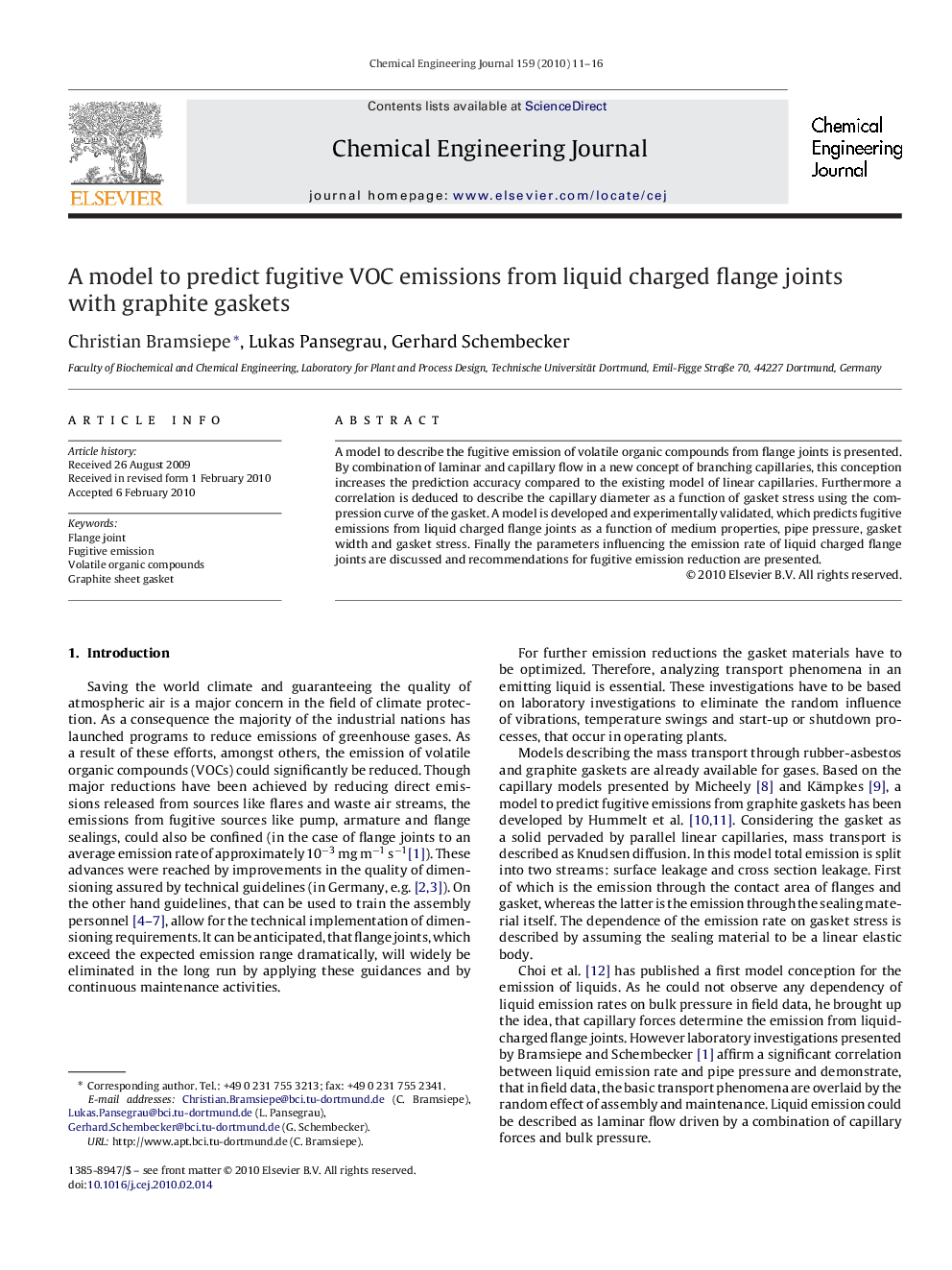| Article ID | Journal | Published Year | Pages | File Type |
|---|---|---|---|---|
| 152496 | Chemical Engineering Journal | 2010 | 6 Pages |
A model to describe the fugitive emission of volatile organic compounds from flange joints is presented. By combination of laminar and capillary flow in a new concept of branching capillaries, this conception increases the prediction accuracy compared to the existing model of linear capillaries. Furthermore a correlation is deduced to describe the capillary diameter as a function of gasket stress using the compression curve of the gasket. A model is developed and experimentally validated, which predicts fugitive emissions from liquid charged flange joints as a function of medium properties, pipe pressure, gasket width and gasket stress. Finally the parameters influencing the emission rate of liquid charged flange joints are discussed and recommendations for fugitive emission reduction are presented.
